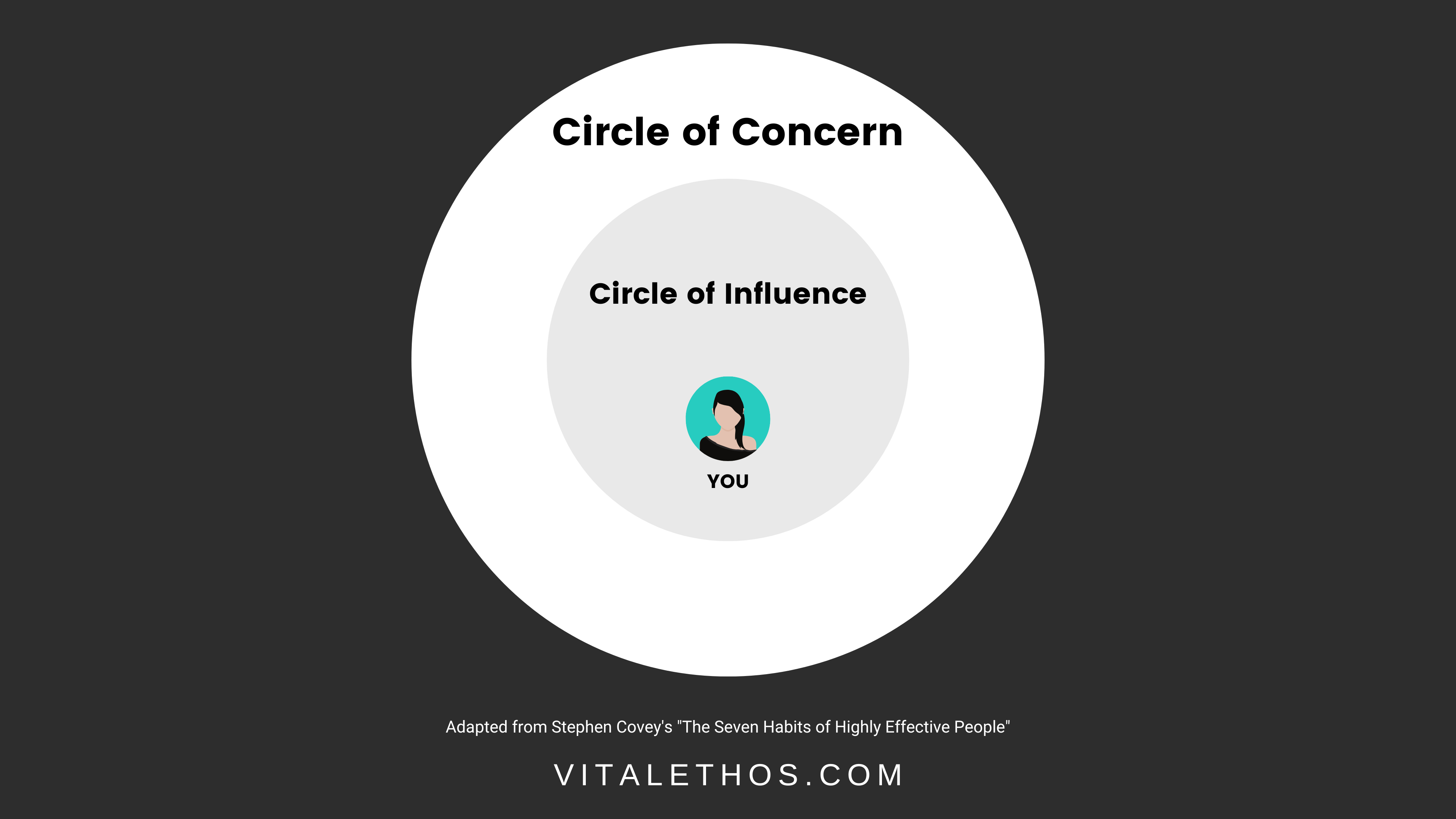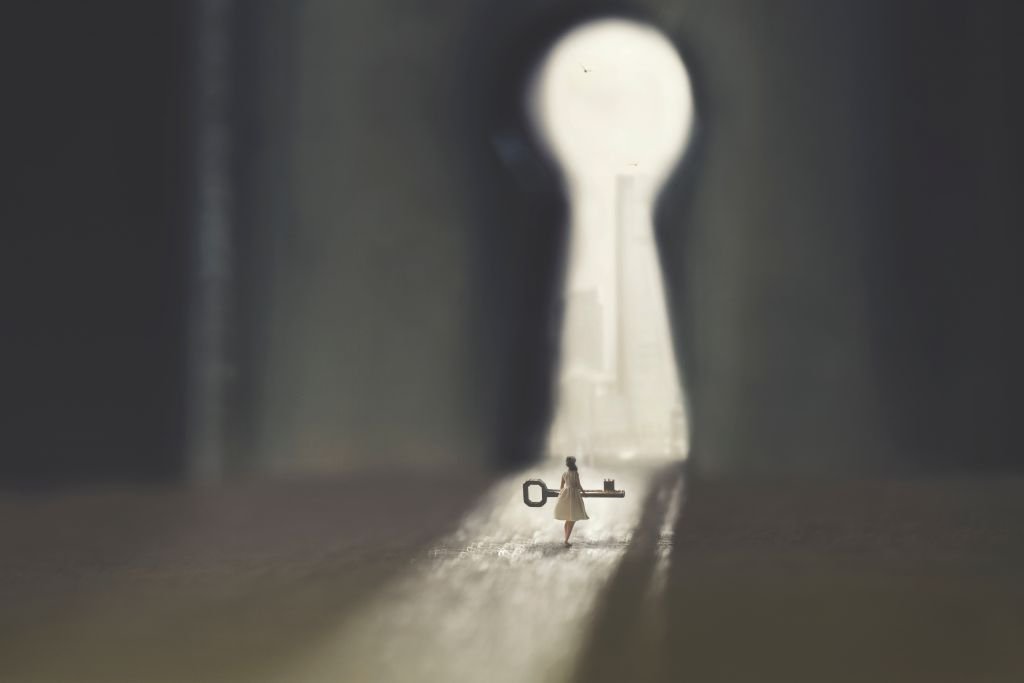Click– Click– Click– Click– Click…
The rollercoaster approaches the apex of the track. Your car lurches forward, slower, slower, slower.
You reach the very top. The briefest pause. Life hangs in the balance.
Suddenly, you’re barreling towards the ground at warp speed.
Is your body tense? Shoulders hunched? Waiting for the drop to be over?
Or are your arms up? Head tilted back? Soaking up every sensation as it whips past?
As humans, we are fortunate to be able to experience a rich spectrum of emotions, from joy to sadness to anger.
But in order to truly thrive during this lifetime, we must release our desire to control the uncontrollable.
This is no small feat. Our desire to control unpredictable forces is hardwired into our DNA as a species. It is our nature to fight for survival against all odds. Yet, it’s also our nature to constantly push to evolve beyondour instincts.
The Buddhist principle of non-attachment is especially relevant as humans collectively experience the coronavirus pandemic and all the fears and suffering that have arrived along with it.
As individuals, we can do very little to control the course of the virus, the economic devastation left in its wake, and the tragic loss of life around the world.
But we can control our own thoughts and behavior.
We can cultivate an inner resilience that will carry us through the inevitable ups and downs of life. A resilience that enables us to be better neighbors, better partners, better parents, and better humans to each other.
Compassionate non-attachment is the practice of releasing the need to control external circumstances– whilst genuinely caring about the welfare of all beings and being engaged in the present moment.
Read on for actionable advice and journaling prompts to help you develop compassionate non-attachment in your life.
Understand the Benefits of Non-Attachment

In The Seven Habits of Highly Effective People, Stephen Covey imagines two concentric circles: the Circle of Concern and the Circle of Influence.
The larger, outer Circle of Concern represents everything you care about– career outcomes, your health, your finances, your kids, your partner, world events, politics. The list goes on and on.
Your smaller, inner Circle of Influence represents all the concerns you can actually do something about.
Covey argues in favor of proactively focusing your energy and attention within your Circle of Influence. Not only does this lead to a happier, more positive life, but it can actually help expand your Circle of Influence!
As a recovering control freak, I can personally attest to the transformative power of releasing attachments outside my Circle of Influence.
Just in the last six months since beginning to practice compassionate non-attachment, I’ve experienced a wide range of benefits including:
- My anxiety and stress are greatly reduced.
- I am in an overall happier mood– even in the midst of difficult circumstances.
- I’m no longer trying to change everything that does not fit my idea of the ‘perfect’ conditions or outcome.
- By accepting what is outside my control, I’m empowered to consciously improve what is inside my control– my own thoughts and behavior.
- I’m noticing more opportunities to provide value to others.
- I experience fewer arguments and conflicts. I no longer feel the need to be defensive or competitive in personal interactions.
How could practicing compassionate non-attachment enrich your life, your relationships, and your state of mind?
Open yourself up to those infinite possibilities, and turn your attention within.
Compassionately Examine Your Own Attachments
Buddhist texts suggest that all suffering is caused by craving and clinging, which are useful terms for understanding our attempts control external circumstances. Fear often motivates craving and clinging.
Craving and clinging are not “bad.” But when you let craving and clinging control you, they can cause quite a bit of suffering in your life.
Knowing when and how to let go of your attachments is a powerful skill to have. And before you can begin to release your attachments, you must first get to know them.
Try responding to the journal prompts below to get started.
- What are you clinging to? List the people, objects, situations, outcomes, beliefs, and feelings you are clinging to.
- What are you craving? List the people, objects, situations, outcomes, beliefs, and feelings you are craving.
- What benefits does each attachment provide you with? Describe the mental and emotional benefits every item on your list provides.
- How can you provide these benefits to yourself with your own internal resources? Consider alternate possibilities that don’t rely on circumstances outside your control.
- How can you provide more value to yourself (and to the world) by releasing your attachments? With less craving and clinging in your life, you create space. What do you want to invite into that space?
Be curious, not critical, as you identify the various attachments in your life.
Remember, the purpose of compassionate non-attachment is to learn how to flow with the risings and fallings of fortune with resilience and grace.
Hold the Present Moment Sacred at All Costs
Arguably, the present moment is all that exists. (Maybe.)
But regardless of the validity of philosophical presentism — entertaining that theory has made it easier for me to release my attachments to past worries and future outcomes.
My approach is simple: I always act as if the present moment is sacred.
Obviously the word “sacred” means different things to different people. I don’t even have a personal working definition. But I know how it feels.
Sacred is how I feel when I walk through an old forest and sunlight shines through the misty trees. Sacred is how I feel when my young daughter pins me down to kiss me on the tip of the nose. Sacred is how I feel when I’m at a concert and I hear magical and otherworldly music that vibrates to the core.
My whole life changed when I realized every present moment is just as sacred as the moments I described above.
The next time you find yourself in a stressful, frustrating, or otherwise unpleasant situation– pay attention.
Be an objective observer of both the big picture and the little details. Try not to assign meaning to passing sensations. Just notice them.
Then, when it’s safe, respond to these prompts in your journal.
- How did you interpret this situation? What stories did you tell about the situation as it was happening?
- If you strip away your interpretation, which facts are you left with?How did your interpretation distract you from the facts?
- How would it feel to calmly accept the facts next time, without telling a story about them? How might you experience the situation differently?
Physical triggers are also useful for bringing your mind back into the present moment whenever you’re clinging to past or future concerns. Here are a few suggestions.
- Take three slow breaths deep into your belly.
- If you can stand up, stretch slowly, and reach for your toes. Hang in forward fold for a few moments, swaying gently from side to side, letting your spine grow longer.
- If you’re seated, sit up straighter. Relax your shoulders. Relax any tension in your abdomen.
- Notice something beautiful or interesting about the environment you’re in. Focus solely on that detail for a few moments, and do not think of anything else.
Remember where you are (in your body), and what is true right now (the existence of the present moment).
Make Peace With Your Pain — and Emerge Stronger
Sometimes, devastating tragedies happen.
And while grieving fully is essential to recovery, compassionate non-attachment is a powerful tool for healing as well.
Although every grieving process is different, you must make peace with the trauma you experienced in order to heal fully. The following journal prompts may serve as a starting point for making peace with your pain.
- Imagine your painful experience as a teacher. How can you become a stronger, better person from the lessons you learned from this teacher? Now imagine your stronger, improved self. How do you look, feel, and act?
- Write a letter to yourself, forgiving yourself for holding onto the pain for so long. Reassure yourself that it’s safe to let go now. That you are ready to let go and move on. Re-read the letter on a regular basis.
- Write down every detail of the pain you are experiencing, including how you interpret the trauma and how it continues to impact you. If it is safe, let yourself cry or scream without restraint for as long as you want to. Afterward, burn or discard the paper, and say this prayer aloud: “Universe, I am ready to let go of this pain. Thank you for guiding me as I release my suffering. I am so grateful to finally be free.”
It can take months, or even years, to emerge stronger and wiser from a traumatic experience. But if you approach your pain with compassionate non-attachment– you may be closer to finding peace than you realized.
“Where there is ruin, there is hope for a treasure.”
– Rumi
Support Others with Compassionate Non-Attachment
Compassion fatigue describes the burnout experienced by caregivers, therapists, educators, and other professionals who serve people who have undergone trauma. This eventually leads to emotional detachment, indifference, and exhaustion, negatively impacting all involved parties.
But compassion fatigue is not just limited to certain professions. Anybodywho provides compassionate support without healthy boundaries is at risk.
As somebody with a history of depression, anxiety, and addiction, I gravitated towards friends with similar struggles over the years. Everyone heals at their own pace, and as I began to heal, I found myself at odds with traumatized friends making outrageous demands and really, really bad decisions.
One of the toughest experiences was breaking up with my former best friend. Not only was she selling hard drugs, but she seemed to have fallen in with a dangerously violent crowd.
Ghosting her would have been the easiest course of action. But I decided to have a very difficult conversation instead. During that conversation, I reaffirmed my love for her but asserted that her lifestyle was now putting us both in danger, and so our friendship could no longer continue. I encouraged her to reach out in the future if she got back on a decent path.
Although we haven’t spoken since, I gained self-respect and confidence by prioritizing my wellbeing over the momentary sadness and discomfort of losing our friendship. And, from what I’ve heard through the grapevine, this approach had an impact on her too. I can only hope that one day she will choose to heal.
Compassionate non-attachment isn’t always easy, but it is a powerful way to care for yourself while showing up for others.
Here are some techniques that may help.
- Practice a loving-kindness meditation daily. You can use a guided meditation or design your own ritual. The important part is to consciously send out loving energy to other people in the universe.
- During emotionally intensive interactions with loved ones, first visualize a protective energetic barrier of bright light around you.Then, focus on closely listening to the other person and being curious about their experience. Resist the urge to offer solutions or reframe the problem, unless they explicitly ask for your advice. Try to stay calmly engaged without getting pulled into the story.
- Write down statements of positive support that uphold your boundaries, for future use with loved ones. Advance preparation makes compassionate non-attachment much easier in the moment. Check out Amber Rae’s “Five Scripts for Saying No (With Love)” for inspiration.
Remember to always put on your own oxygen mask first.
Only when you are thriving is there any hope of helping the people around you to thrive as well.
Trust in the Outcome, the Universe, and Yourself
Ultimately, compassionate non-attachment is rooted in the idea of impermanence.
Everything is constantly shifting, evolving, changing. All things, whether deemed good or bad, eventually come to an end. Rather than struggle against the inevitable– empower yourself by trusting in the outcome.
Whether you believe in chaotic nihilism, or an omnipotent god calling all the shots, it’s worth entertaining the old adage that “everything happens for a reason.”
This mental framework puts you in control of creating meaning and lessons from the conditions in your life. While you should avoid getting attached to any one interpretation, it’s freeing to trust that you will be able to grow and benefit from any potential outcome.
Affirmations are a powerful tool for developing trust in the universe– and in yourself. Here are a few of my favorites:
- I have everything I need to navigate unknown waters. I trust that no matter what passes, I will grow and thrive with grace and resilience.
- I surrender to whatever the universe has in store for me.Surrendering brings new opportunities and gifts beyond anything I ever imagined.
- I trust that the universe will provide exactly what is needed. I accept that the lessons behind these events may only be revealed with time. I trust that even challenges and pain can help me to become the person I am supposed to be.
You Hold the Key to a Rich and Fulfilling Life

“Peace is already within me.”
– Kenneth Soares
As the rollercoaster of life whips you up, down, and all-around, remember that you choose how to experience the ride.
Compassionate non-attachment is not a destination. It’s a way of life.
And like any conscious lifestyle, it’s okay if you slip up. We all cling to expectations, or spiral into disappointment, or get sucked into fearful thinking– sometimes.
The important thing is recognizing when unhealthy attachments are clouding your perspective. And then gently releasing your grip.
Only by letting go can you unlock the secret to true happiness.
Related Articles
- How I Created My Own Custom Spiritual Practice
- 11 Grounding Affirmations To Keep You Centered Through Any Crisis
- How to Become a Lightworker: The Complete Guide




